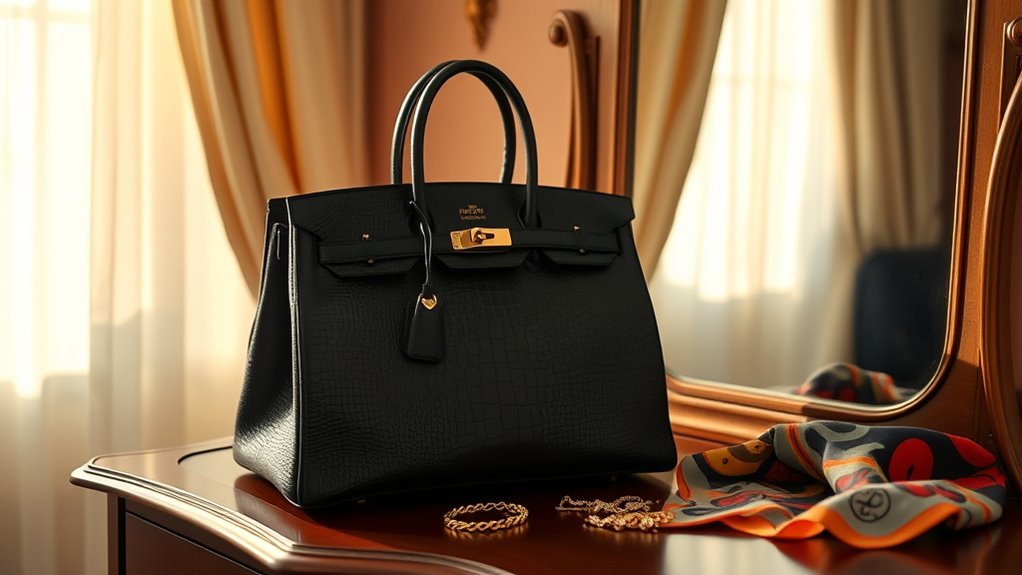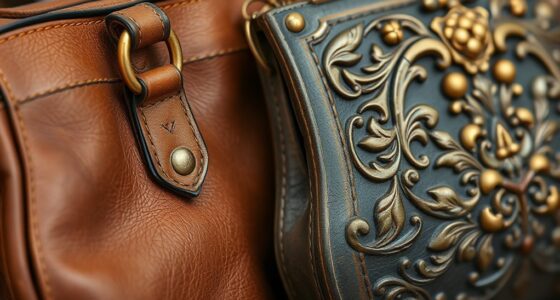The “It bag” phenomenon of the 2000s turned luxury handbags into symbols of status through celebrity endorsements, exclusive limited editions, and clever branding that focused on scarcity and desirability. Influential designers and models elevated bags like the Hermès Birkin and Chanel Classic Flap, making them icons of elegance and prestige. Celebrities like Paris Hilton and Jennifer Lopez boosted popularity with media hype, fueling demand. If you keep exploring, you’ll uncover how this phenomenon continues to evolve today.
Key Takeaways
- The “It Bag” trend emerged in the early 2000s as a symbol of luxury, exclusivity, and social status.
- Celebrity endorsements and media coverage amplified demand, making certain bags highly coveted status symbols.
- Limited editions and scarcity strategies created urgency and exclusivity, fueling consumer desire and emotional attachment.
- Influential designers and iconic models like Hermès Birkin and Chanel Classic Flap set standards for elegance and prestige.
- The phenomenon shaped modern fashion culture, blending luxury branding with social influence and evolving consumer values.
Origins of the “It Bag”: Fashion’s New Status Symbol
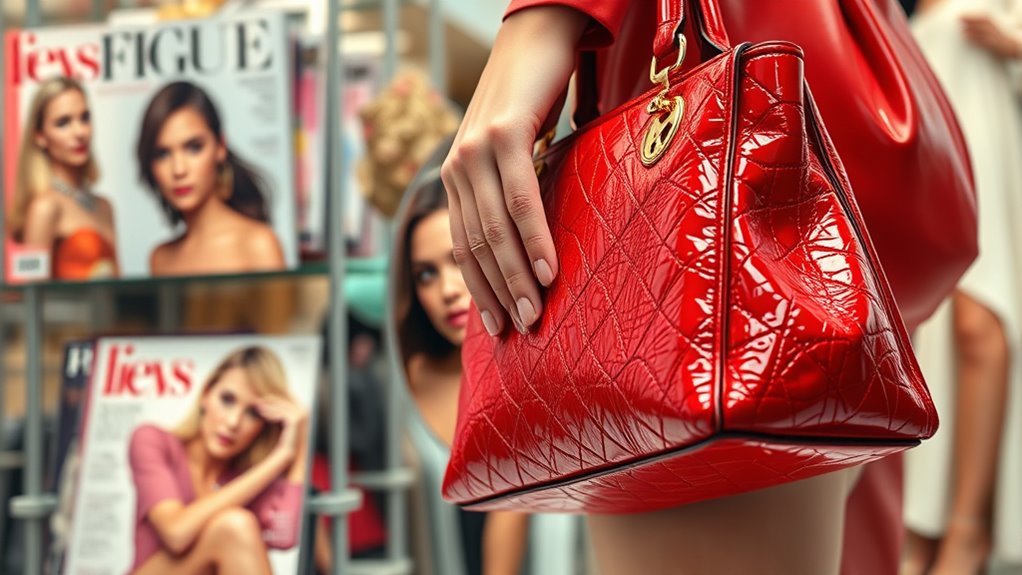
The concept of the “It Bag” emerged in the early 2000s as a symbol of status and style. You quickly realize that luxury branding played a vital role in creating desire around these bags. Fashion marketing strategies emphasized exclusivity, making owning an “It Bag” a statement of prestige. Designers and brands carefully cultivated hype through limited editions and celebrity endorsements, fueling demand. As a result, these bags became more than just accessories—they became cultural symbols. Your perception of fashion shifted, recognizing that owning a specific bag could elevate your social standing. The rise of the “It Bag” marked a new era where luxury branding and savvy marketing transformed simple accessories into powerful emblems of wealth and influence. Additionally, the influence of high-quality materials and craftsmanship contributed to the desirability and perceived value of these iconic bags. The use of authentic vintage elements further enhanced their appeal, blending tradition with modern luxury. Moreover, the strategic use of scarcity marketing heightened consumers’ sense of urgency and exclusivity, cementing their desirability.
Key Designers and Iconic Models of the 2000s
You’ll see how influential designers like Gucci’s Tom Ford and Fendi’s Silvia Venturini Fendi shaped the 2000s bag craze. Iconic models such as the Hermès Birkin and Chanel’s Classic Flap became status symbols. Celebrity endorsements from stars like Paris Hilton and Jennifer Lopez amplified their impact and popularity. Additionally, the boho-inspired lifestyle movement influenced the way many embraced these luxury accessories, blending casual elegance with high fashion. The era also emphasized attention to detail and craftsmanship, elevating these bags from mere accessories to symbols of identity and personal expression. The rise of collectible bags as investment pieces, which often feature limited editions and unique designs, further driving their desirability and cultural significance. This period also saw the emergence of luxury branding as a key element in defining social status, reinforcing the bag’s role as a symbol of wealth and exclusivity.
Influential Designers of the Era
During the 2000s, certain designers and models rose to prominence by shaping the era’s iconic “It Bags,” making their mark through innovative styles and celebrity endorsements. These influential designers mastered luxury branding, turning their names into symbols of status and exclusivity. They understood the power of fashion marketing, leveraging celebrity culture and media attention to elevate their collections. Designers like Tom Ford at Gucci and Stella McCartney at Chloe redefined modern aesthetics, making their handbags must-have items for the fashion-forward. Their ability to blend luxury craftsmanship with trendsetting designs created a buzz that resonated across social circles. These influential figures didn’t just produce accessories—they built brands that embodied the era’s desire for prestige, influencing both consumer behavior and the global fashion landscape.
Iconic Bag Models
In the 2000s, certain designers and models became synonymous with the era’s most coveted handbags, shaping the landscape of luxury fashion. These iconic bags exemplify exceptional luxury craftsmanship and innovative handbag design, making them must-have status symbols. The Chanel Classic Flap, with its timeless quilted leather and signature CC turn-lock, set a standard for elegance. The Hermès Birkin, renowned for its meticulous handcraftsmanship, became a symbol of exclusivity and status. The Louis Vuitton Speedy combined practicality with luxury craftsmanship, appealing to a broad audience. Each model’s distinctive design and craftsmanship elevated their status, making them instant icons. These bags didn’t just define the era—they set the tone for future luxury handbag design, creating lasting cultural and fashion influence. Additionally, the brand heritage of these designers played a crucial role in establishing their iconic status and enduring appeal. The influence of luxury craftsmanship and innovative materials during this period helped solidify these bags’ legendary status. Furthermore, the integration of luxury innovation in design and manufacturing processes contributed significantly to their enduring desirability and influence.
Celebrity Endorsements and Impact
Celebrity endorsements in the 2000s played a pivotal role in elevating handbags from mere accessories to must-have status symbols. You saw luxury branding thrive as celebrities openly collaborated with designers, creating buzz and desirability around specific bags. When stars like Beyoncé or Sarah Jessica Parker showcased a certain style, it instantly transformed into an icon of the era. These celebrity collaborations amplified the hype, making the bags more than just luxury items—they became cultural phenomena. Your favorite stars’ choices influenced countless fashion enthusiasts to seek out the latest must-have bags, fueling the “It Bag” craze. This strategic alignment between celebrities and luxury brands cemented the bags’ status, ensuring they remained coveted symbols of style and status throughout the decade. Additionally, the influence of celebrity-endorsed hours by major beauty stores helped to promote the beauty products associated with these fashionable accessories, further elevating their status.
The Role of Celebrity Endorsements and Media Influence
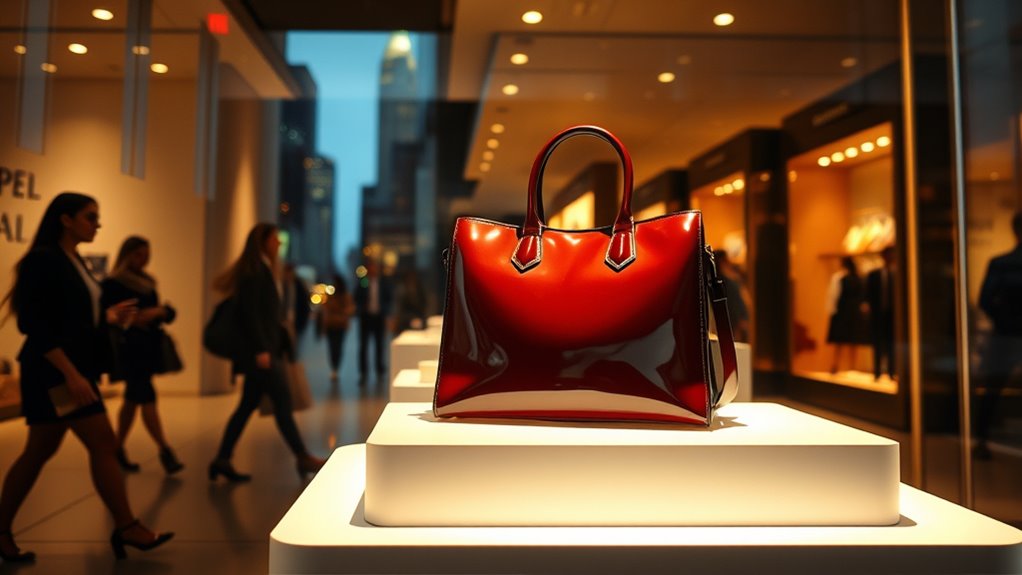
Celebrity endorsements and media influence played a pivotal role in fueling the “It Bag” craze of the 2000s. When celebrities flaunted designer bags, it instantly transformed these accessories into must-have items. Social media’s rise amplified this effect, allowing fans to see their favorite stars holding or wearing the latest styles in real time. This visibility sparked a vintage revival, as many sought to emulate celebrity looks using second-hand or vintage bags, making luxury more accessible. Media coverage and paparazzi shots kept the hype alive, creating a sense of exclusivity and desire. Your desire for that perfect bag was fueled by these images and endorsements, making it not just about fashion but about aligning with a lifestyle many aspired to. Additionally, the celebrity influence on fashion trends extended beyond bags to include entire wardrobes, further cementing their role in shaping the “It Bag” phenomenon. Recognizing the cultural impact of celebrity endorsements helps explain how social perceptions of luxury and status are shaped by media narratives and public figures. The proliferation of Media coverage and celebrity sightings made these bags symbols of status and aspiration, often driven by the durability in wet conditions of celebrity-endorsed brands. Moreover, the rise of celebrity-driven marketing campaigns further solidified their importance in consumer culture.
The Impact of Scarcity and Limited Editions on Demand

Scarcity and limited editions considerably fueled the demand for “It Bags” during the 2000s, as consumers sought exclusivity and uniqueness. Luxury branding and marketing strategies capitalized on this desire by releasing limited runs, making each piece feel special. Limited editions created urgency, pushing you to act quickly to secure a coveted item. This scarcity elevated the bag’s status, transforming it into a symbol of prestige. Brands emphasized exclusivity through marketing campaigns that highlighted rarity and craftsmanship. The table illustrates how scarcity influences consumer behavior:
| Strategy | Result |
|---|---|
| Limited releases | Increased desirability and urgency |
| Emphasis on rarity | Enhanced brand prestige |
| Exclusive marketing efforts | Fostered loyalty and demand |
This approach made “It Bags” irresistible, fueling their legendary status. Recognizing the importance of consumer psychology helped brands effectively craft these strategies to maximize allure and exclusivity. Additionally, the deliberate use of perceived rarity heightened consumer desire and reinforced the exclusivity of each piece. Furthermore, limited edition releases often included unique design elements that further distinguished these bags from regular collections, amplifying their desirability. The incorporation of branding and storytelling also played a significant role in shaping consumer perception of luxury during this era.
Consumer Psychology and the Desire for Exclusivity
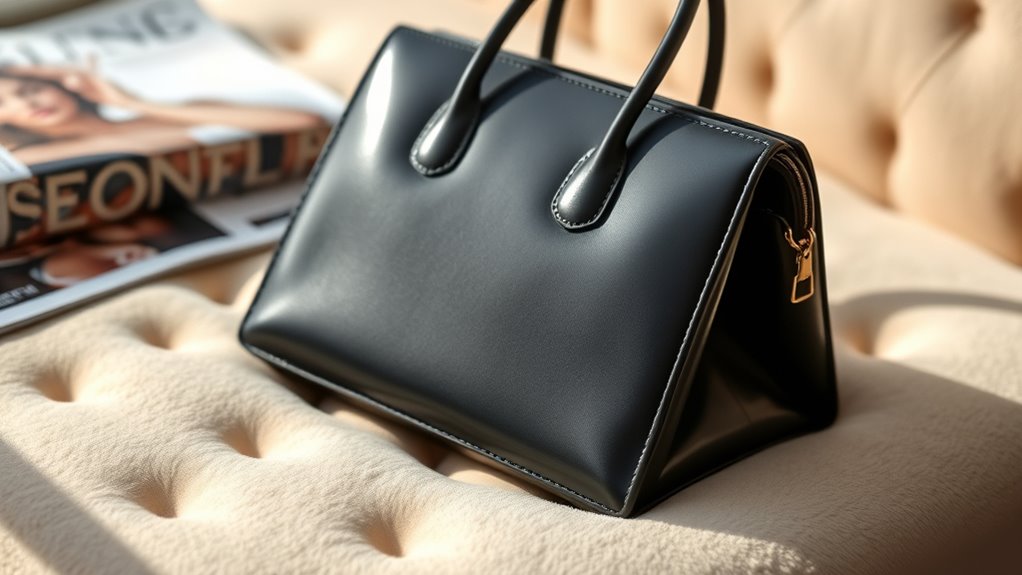
You’re drawn to exclusive bags because owning something rare boosts your status and makes you feel special. Scarcity creates a sense of urgency, making you want the bag more. Ultimately, it’s the desire to stand out that fuels your fascination with these coveted accessories. Recognizing brand trustworthiness can deepen your understanding of meaningful connections and enhance your awareness of love opportunities.
Scarcity Fuels Demand
Limited availability often makes a product more desirable, tapping into our deep-rooted need for exclusivity. When a luxury brand creates scarcity, you’re more likely to see it as special, increasing its appeal. Limited editions or small runs strengthen the perception that owning the item sets you apart, fueling demand. This strategy enhances luxury branding by positioning the product as rare and coveted. As a result, consumer loyalty grows because buyers want to maintain their status and connection to an exclusive community. Scarcity doesn’t just drive impulse purchases; it also deepens emotional attachment to the brand. When you believe that an item is hard to find, you’re more motivated to acquire it, fueling the ongoing hype and reinforcing the allure of the “It Bag.”
Status Symbol Appeal
The desire for exclusivity drives many consumers to view luxury handbags as powerful status symbols. When you invest in a designer bag, you’re not just purchasing an accessory—you’re signaling your consumer status. Luxury branding plays a pivotal role in this, as it instantly communicates prestige and wealth. Owning a coveted “It Bag” elevates your social standing and sets you apart from others. The allure lies in the perception that only a select few can access such exclusivity, fueling your desire to stand out. This drive for status influences purchasing decisions, making luxury handbags more than just fashion statements—they become symbols of success and sophistication. Ultimately, this status symbol appeal taps into your need for recognition and validation within your social circle.
The Legacy and Evolution of the “It Bag” Culture
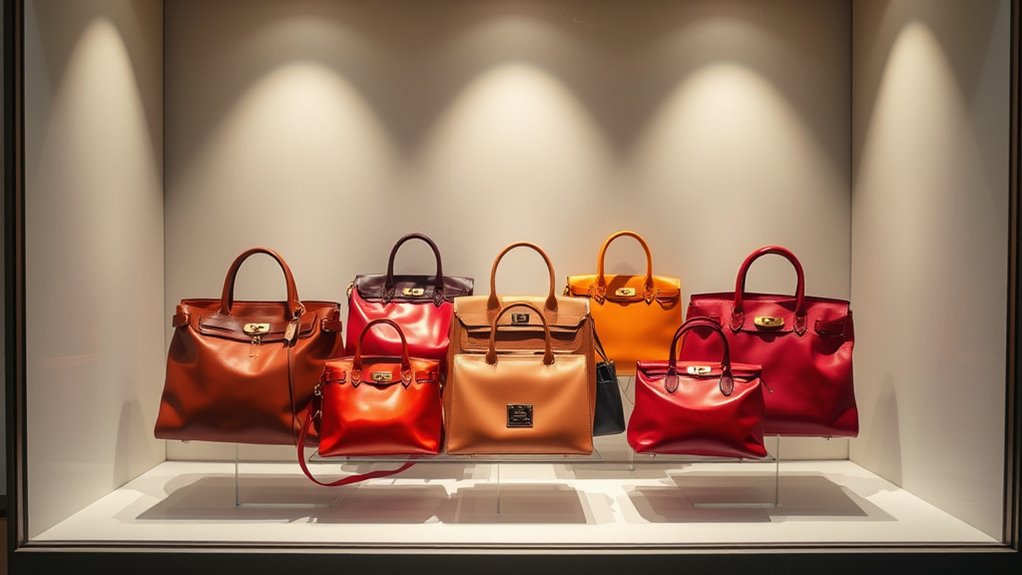
Although the “It Bag” phenomenon peaked in the 2000s, its influence continues to shape modern fashion culture. Today, the legacy is seen in how brands prioritize sustainable fashion, focusing on eco-friendly materials and ethical production to appeal to conscious consumers. Digital fashion platforms have transformed the way you discover and purchase bags, making exclusivity and trendiness more accessible through online communities and virtual shows. The idea of a bag as a status symbol persists, but now it’s intertwined with values like sustainability and individuality. The evolution reflects a shift from purely conspicuous consumption to a more mindful approach, where the story behind the bag and its impact matter just as much as the item itself. This dynamic keeps the “It Bag” culture relevant and forward-looking.
Frequently Asked Questions
How Did Social Media Accelerate the “It Bag” Trend?
Social media sped up the “it bag” trend by making celebrity endorsements and viral marketing more powerful. When celebrities flaunt a bag, millions see it instantly, fueling desire and demand. Platforms like Instagram allow users to share and promote luxury items quickly, turning them into must-have status symbols. This real-time exposure creates a buzz that keeps the trend alive and evolving, making it impossible to ignore or resist.
What Role Did Fashion Weeks Play in Popularizing “It Bags”?
Imagine the grand stage of fashion weeks, where runway shows become the spotlight for luxury branding. You see celebrities walking with coveted bags, instantly fueling desire. These events turn “it bags” into must-have symbols, amplified by celebrity endorsements. Fashion weeks, thus, serve as powerful platforms that elevate these bags from exclusive items to cultural icons, sparking worldwide trends and making them an essential part of modern style.
Were “It Bags” Affordable for the Average Consumer?
You’ll find that “it bags” weren’t really affordable for the average consumer because luxury pricing and brand exclusivity kept them out of reach. These bags became symbols of status, often costing thousands of dollars, making them exclusive and desirable. While some could save up or find deals, most people couldn’t easily access these designer items, which only heightened their allure as luxury symbols rather than everyday accessories.
How Did “It Bags” Influence Sustainable Fashion Debates?
You might notice that “it bags” sparked debates on sustainable fashion, highlighting the link between luxury consumption and environmental impact. These bags became symbols of status, encouraging frequent purchasing and disposal. This coincidence pushed consumers and designers to question whether luxury could be responsible, leading to increased interest in eco-friendly materials and ethical practices. As a result, “it bags” indirectly fueled the push for more sustainable, conscious fashion choices.
Did “It Bag” Culture Differ Globally or Was It Universally Similar?
You’ll find that “it bag” culture varies globally due to cultural variations and consumer behavior. In some regions, luxury and exclusivity drive demand, while in others, trends and social status influence choices. You might notice that the obsession with “it bags” shifts based on local fashion norms and economic factors, making the phenomenon feel both universal in its appeal and unique in how it manifests across different cultures.
Conclusion
So, next time you see someone clutching that iconic bag, remember—you’re witnessing a symbol so powerful it can transform a simple accessory into a legendary treasure. The “It Bag” isn’t just a purse; it’s a ticket to instant fame, envy, and obsession. It’s like holding a piece of fashion history in your hands, a rare gem that turns everyday life into a glamorous runway. Truly, it’s a phenomenon that’s etched into the fabric of style forever.
